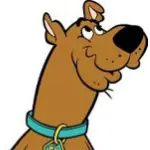Tim Burton, a director I greatly admire, is known for his distinct style. His best collaborator is my favorite, Johnny Depp – two personalities that complement each other perfectly. Tim has a penchant for gothic aesthetics, often directing dark yet whimsical films like "Edward Scissorhands" and the two classics I will discuss.
"The Nightmare Before Christmas"
During Halloween, Disney brought the 3D version of "The Nightmare Before Christmas" to theaters. While the plot remained unchanged, experiencing it in 3D added an extra layer of awe. A musical film like this deserves the superior sound quality of a movie theater, making me realize how subpar the previous Rmvb formats were.
"The Nightmare Before Christmas" is a classic gothic fairy tale. Set in the Halloween Town filled with zombies, darkness, graves, and castles, its residents revel in eccentricity, scaring people and playing with disgusting mice. A fairy tale in such an environment is truly unique.

Fairy Tale Element 1: Each holiday has its own town, where residents dedicate the entire year's efforts for that day. It's a peculiar concept, making the spooky Halloween Town strangely relatable – Halloween aims for this kind of terror, after all. The inhabitants seem like familiar faces we encounter yearly, just like the grinning pumpkins, creepy clowns, and eye-rolling female ghosts we often overlook. The stark contrast between Halloween Town and Christmas Town amplifies the surreal, creating the essence of a fairy tale world.
Fairy Tale Element 2: The determined and adorable protagonist, Jack Skellington, grows weary of the routine scares year after year. When he stumbles upon Christmas Town, experiencing an atmosphere opposite to what he's used to, he whimsically decides to steal Christmas. This protagonist is different – not the kind but foolish, brave but brainless, handsome prince. Jack is intelligent and a natural leader. His terrifying Halloween every year easily piques the interest of the residents in the unfamiliar Christmas Town, and he effortlessly wins the showdown at the town meeting. This fairy tale doesn't follow the clichés.

When Jack feels empty and lost, he pursues his happiness without hesitation, disregarding the consequences. He is selfish, openly admitting, "Why should they have all the fun? It should belong to everyone. Not everyone, in fact, but me." This candid self-interest adds to his charm. Jack is confident and resilient; even after his Christmas dream is shattered, he quickly picks himself up. I love the part where he says, "Well, what the heck, I went and did my best. And for a moment, why, I even touched the sky. And at least I left some stories they can tell, I did." It conveys a sense of a man who can handle success and failure gracefully.
What captivates me the most about "The Nightmare Before Christmas" is its musical format. When a fairy tale or artistic film is filled with music, it becomes a work of art. The same goes for "Beauty and the Beast," another animated film I adore, featuring a series of beautiful songs. In a movie, pieces often set the primary atmosphere, creating different melodies that form a cohesive story. The soundtrack becomes a conceptual album.

Music adds depth to a film, making it more fluid and vivid. In a musical, even listening to dialogue becomes an art appreciation. "The Nightmare Before Christmas" excels in creating a harmonious atmosphere. Songs like "This is Halloween" in Halloween Town and the delightful "What's this" in Christmas Town, along with Jack's emptiness and Sally's sorrow, string the entire film together seamlessly. The plot is tight, with no unnecessary or dull dialogues. In my view, the music makes "The Nightmare Before Christmas" an absolute classic.






























Share your thoughts!
Be the first to start the conversation.